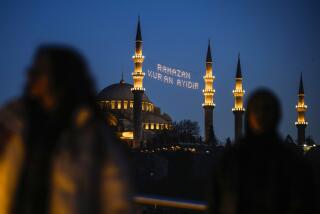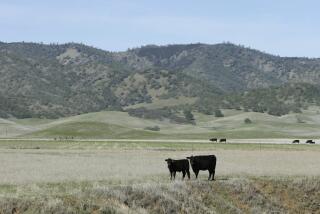Kurds Seek Reprieve for Ancient Town
HASANKEYF, Turkey — A medieval stone minaret rises beside the dusty, limestone hills of Turkey’s southeast.
It is a relic of a kingdom that once ruled the region, but it has become a flash point between the government and ethnic Kurds struggling to preserve their heritage.
After surviving for hundreds of years, the minaret and parts of the nearby fortress of Hasankeyf may end up under water as Turkey builds a series of dams to irrigate parched cotton and tobacco fields.
The irrigation plan is one of the largest development projects in the world. But it has enraged many in the overwhelmingly Kurdish southeast.
They say a state that spends billions to battle Kurdish guerrillas in the barren mountains surrounding Hasankeyf is not willing to revise its plans to save one of the area’s archeological treasures.
“The battle to save Hasankeyf has become a political battle,” says archeologist Jale Velibeyoglu. “Like Jerusalem in Israel, Hasankeyf has become a sacred symbol in the region.”
Turkey has refused to recognize Kurds as a distinct group and does not grant its 12 million Kurds the minority rights it extends to non-Muslims including Jews, Greeks and Armenians. It is illegal for Kurds to broadcast or teach in their language. Speaking Kurdish was legalized in 1991.
It is that sense of cultural alienation that has fueled Kurdish anger over the impending loss of Hasankeyf.
Much of Hasankeyf’s charm comes from its location, perched on white limestone hills above the Tigris River.
The citadel--a row of collapsed stone houses--overlooks the river and a deep gorge that cuts through the white rock. The remains of an arched stone bridge span part of the river. Lining the gorge are dozens of caves where people lived until recently, carving shelves and alcoves into the soft stone.
A reddish-brown stone minaret rises from a mosque below the citadel. The minaret’s side is marked by Koranic engravings in the shape of a teardrop; on its top, perched like a cap, sits a large stork’s nest.
In medieval times, spices from India and silk from China moved through the area, bringing riches to the Islamic rulers of the town, then the regional capital.
“To lose this pearl, this diamond, will be very, very sad,” said Olus Arik, who has directed excavations in the area since 1985.
Turkey is expected to begin construction of the Ilisu dam early next year. Nine years after that, water will inundate the town, and the several thousand inhabitants who live near the ancient relics will have to move.
Many say the multibillion-dollar project to build 22 dams throughout the southeast is vital to boost the economy of the arid and impoverished area. The dams will open hundreds of thousands of acres to irrigation, generate cheap electricity for a country with meager oil supplies and bring jobs to an area that suffers from high unemployment.
In response to suggestions that the dam design be altered to salvage Hasankeyf, critics point out that the town’s residents are Arabs--not Turks or Kurds--and that a salvage project would be enormously expensive.
Such arguments, however, seem to matter little to residents angered at the impending loss.
“If Pompeii were flooded, how would the Italians feel?” asked Velibeyoglu. “People here feel the same.”
More to Read
Sign up for Essential California
The most important California stories and recommendations in your inbox every morning.
You may occasionally receive promotional content from the Los Angeles Times.









